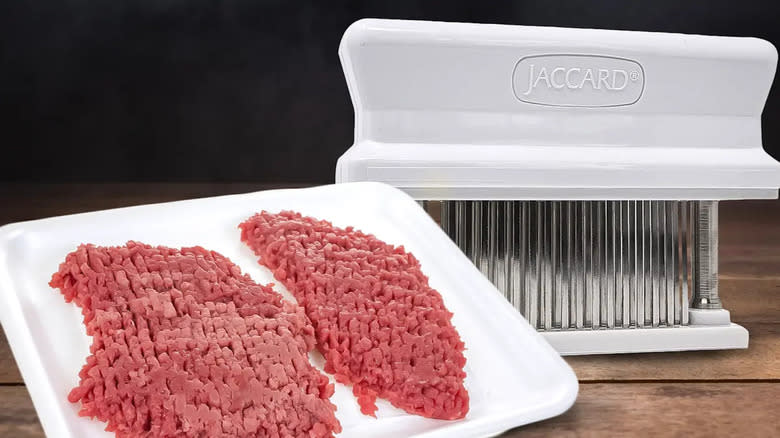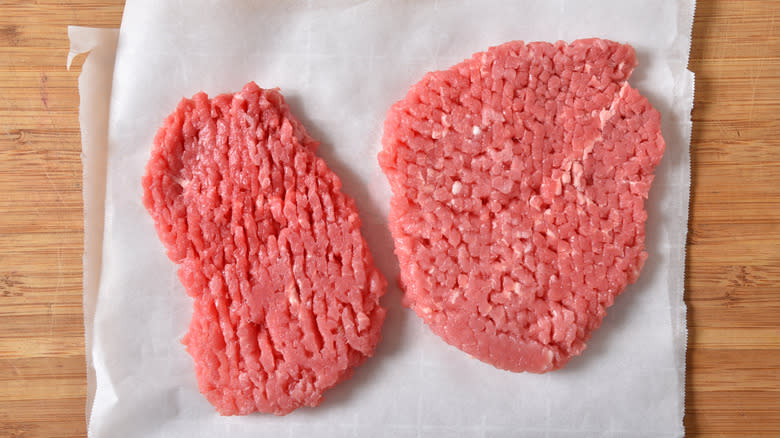Use A Jaccard Tenderizer To Break Down Tough Cube Steak

It's right there in the name. Cube steak has undergone a process known as "cubing" by which a relatively tough cut of beef -- generally top round or sirloin -- is mechanically tenderized by pounding, with a telltale crosshatch pattern being left on the meat. Because of this signature process, cube steak is melt-in-your-mouth direct from the package, right? The reality isn't so straightforward. Cube steak, which is often used for weeknight meals and chicken-fried steak due to its quick cooking and affordability, is indeed worked over at the abattoir, but the machining process and persnickety toughness of the cuts it is rendered from mean that it frequently needs a second round of tenderization at home.
There are, of course, many ways to mitigate cube steak's inherent toughness, from further pounding with a meat mallet to chemical tenderization with baking soda. But, one method that consistently proves to be effective and quick is to break out a Jaccard tenderizer. You're excused if you've never heard of this device, as it is a bit of a specialty item. Its method of operation, however, is easily grasped. The Jaccard tenderizer uses scores of long, thin blades to puncture the meat deeply, along the way loosening and slicing through those items that lead to toughness, namely muscle fibers and connective tissue. By simply applying pressure through the device to the exterior of the steak, the slender blades make quick work of the meat, making it toothsome and supple in just a few seconds.
Read more: Your Guide To The Different Cuts Of Steak
Tender, Not Crushed, Cube Steak

Be it with a mallet or a name-brand Jaccard tenderizer, the principle behind tenderizing meat is the same. The long fibers or muscle and connective tissue need to be broken apart to make the meat chewable. The problem with a mallet is that it works from the outside in, and leaves the cut of steak or other meat flattened as a result. That's not always a bad thing, especially if you're aiming for a thin cutlet, such as for schnitzel or saltimbocca. The beauty of a Jaccard -- and tenderizers sold by other brands -- is that the meat retains its body as the blades slip past the exterior to work their magic.
The benefits of a Jaccard tenderizer don't end at the structural integrity of the meat. Once worked over, the cube steak or what's at hand is rife with tiny punctures that lead deep into the meat. If you are marinating the cube steak, these holes allow the marinade's flavor to penetrate past the outside of the meat. Reaching deep inside, the meat gets a more robust dose of the marinade's action. The same is true of dry rubs, but you'll want to vigorously work it into the cube steak to ensure it maneuvers down into the tenderizer's tracks.
Read the original article on Tasting Table.

